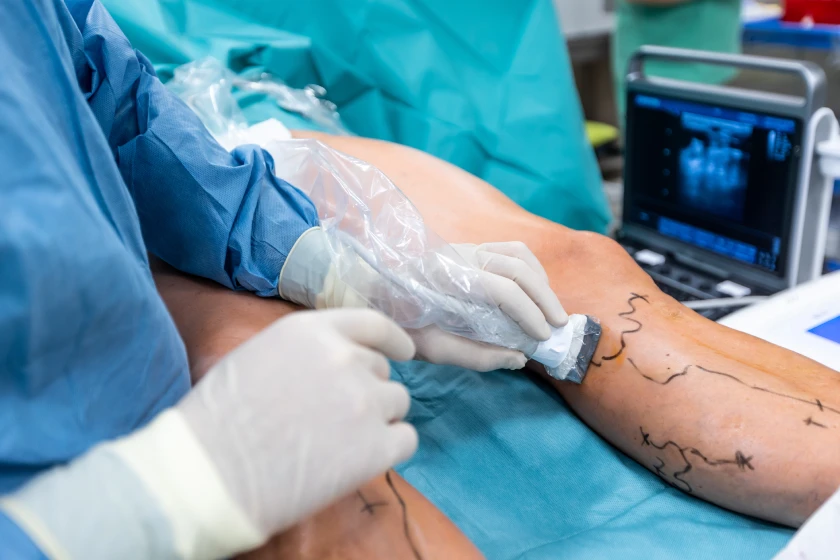
The field of vascular medicine has been revolutionized by a simple idea: treat complex problems inside arteries and veins using tiny tools, without the need for large, traditional incisions. If you are facing a diagnosis involving blood vessel disease, you’ve likely heard the term “endovascular.”
As a highly specialized endovascular doctor, I find it essential that my patients understand these minimally invasive techniques. They represent the gold standard for treating many conditions today, offering faster recovery and less discomfort than ever before.
This guide will explain what endovascular treatments are, how they function at a fundamental level, and why they have become the preferred option for managing serious vascular health issues.
What Are Endovascular Treatments?
Simply put, endovascular treatments are advanced medical procedures conducted from within your body’s circulatory system. They rely on image guidance (like X-ray or ultrasound) to navigate the body’s vascular roadmap.
How Do Endovascular Treatments Work?
The core mechanism of any endovascular procedure involves three key steps:
- Access: The endovascular surgeon begins by making a tiny puncture, often in the groin or arm (usually less than a quarter inch long). This serves as the access point into the circulatory system.
- Navigation: Through this puncture, a catheter—a thin, flexible tube—is inserted. Using advanced live imaging, the doctor guides this catheter through the arteries or veins, navigating it precisely to the site of the disease (the blockage, aneurysm, or weakened wall).
- Treatment Delivery: Once positioned, specialized tools attached to the catheter are deployed. These tools might include balloons to open narrowed vessels, stents to hold them open, or coils and grafts to reinforce a weak spot. The goal is to repair the vessel from the inside out.
Common Types of Endovascular Procedures
The versatility of endovascular surgery allows us to treat a wide range of complex conditions. Here are a few common types you might encounter:
- Angioplasty and Stenting: Used to treat blockages, often caused by Peripheral Artery Disease (PAD). A balloon is inflated to compress plaque against the artery wall, and a stent (a small metal mesh tube) is often placed to keep the artery open.
- Endovascular Aneurysm Repair (EVAR): Used to treat aortic aneurysms (a ballooning or weakening in the artery wall). A specialized stent graft is delivered via catheter and deployed inside the aorta, reinforcing the weak section and preventing rupture.
- Thrombolysis: Used to dissolve blood clots, often in deep veins (DVT). Clot-dissolving medication is delivered directly to the site of the blockage through the catheter.
- Embolization: Used to stop blood flow to a specific area, such as to treat a tumor or an arteriovenous malformation (AVM).
Benefits of Endovascular Treatments
The overwhelming shift toward endovascular treatment methods is driven by tangible benefits for the patient compared to traditional open surgery:
- Minimally Invasive: Only a small incision or puncture is required, leading to significantly less trauma to the skin, muscles, and nerves.
- Reduced Pain and Scarring: Smaller access points mean less pain during recovery and virtually no visible scarring.
- Faster Recovery: Patients typically spend less time in the hospital and return to normal activities much sooner, often within days rather than weeks.
- Lower Risk: Studies consistently show a reduced risk of complications like infection and blood loss compared to large open operations.
- Suitable for High Risk Patients: Because the procedure is less taxing on the body, it is often the best or only viable option for elderly patients or those with multiple coexisting health issues.
When Are Endovascular Treatments Recommended?
An endovascular doctor will recommend an endovascular procedure when the risks of open surgery outweigh the benefits, or when the vascular disease is located in an area difficult to access surgically.
Recommendations usually occur for conditions such as:
- Severe PAD causing claudication or non-healing ulcers.
- Aneurysms (e.g., in the aorta, chest, or brain) that require stabilization.
- Acute extensive deep vein thrombosis (DVT) that requires immediate clot removal or dissolution.
- Vascular conditions in patients with significant cardiac or respiratory issues who may not tolerate general anesthesia well.
What to Expect After the Procedure
Recovery from an endovascular procedure is notably swift.
You will typically be monitored for a few hours in a recovery area or, depending on the procedure’s complexity, stay overnight in the endovascular clinic or hospital. You may feel slight tenderness at the puncture site. Within 24 hours, most patients are walking and performing light activities. Your endovascular surgeon will provide specific instructions regarding limiting lifting and strenuous activity for the first week, but full mobility is usually restored quickly.
Conclusion
Endovascular treatment represents the future of vascular surgery—precise, effective, and minimally disruptive. If you are exploring options for managing your vascular condition, consulting with a qualified endovascular specialist is key. The skill of the endovascular doctor combined with this groundbreaking technology offers the best path toward restoring optimal circulation and protecting your long-term health.
Frequently Asked Questions
Endovascular methods can treat a wide variety of vascular conditions throughout the body. These include arterial blockages caused by PAD, aortic aneurysms, blood clots (DVT), carotid artery disease, and certain brain aneurysms or vascular malformations.
Yes, they are generally considered very safe and are the standard of care for many vascular conditions. Because they are minimally invasive, they carry lower risks of infection, blood loss, and systemic complications compared to traditional open surgery.
Recovery is quite fast. Most patients can return to light, normal activities within 1 to 3 days, and typically resume all physical activity within a week, depending on the complexity of the specific endovascular procedure performed.
Most simpler endovascular procedures, such as diagnostic angiograms or some angioplasty cases, can be done on an outpatient basis. More complex procedures, like EVAR for aneurysms, usually require an overnight stay or a few days of observation.
These specialized procedures are performed by highly trained physicians known as endovascular surgeons or endovascular doctors. This typically includes vascular surgeons, interventional cardiologists, or interventional radiologists who have completed extensive fellowship training in catheter-based techniques. The advantages that vascular surgeons offer are the right balance between open vascular surgeries and endovascular interventions.

Dr. Sumit Kapadia
MBBS, MS, MRCS, DNB-Fellow



